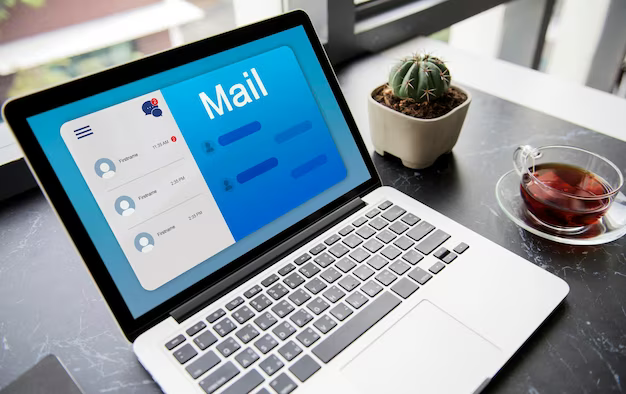We exist in an increasingly digital landscape where work, education, and social interactions mostly take place online. The significance of the digital world is quite profound – it isn’t a mere fleeting trend; it’s here to stay. Subsequently, email, the digital gateway to the daily lives of millions, becomes one of the most effective channels to reach and interact with your audience.
However, the digital arena is a battleground where organizations constantly grapple for their audience’s attention. It’s an undeniable reality that most people are inundated with countless emails daily, usually indiscriminately skimming through subject lines and quickly relegating many to the trash.
How then, can your organization capture attention and break through this incessant influx of emails?
Nonprofit email marketing, when utilized effectively, can be a potent tool to engage with your audience and convert viewers into active members, contributors, and engaged constituents. However, if not applied skillfully, your emails could unintentionally join the ranks of ignored and deleted messages.
Don’t despair, though. A robust nonprofit email strategy can help you overcome these challenges, magnify your message, and reach new audiences, even amidst a global pandemic. This article will unlock top-notch nonprofit email marketing strategies.
7 Nonprofit Email Marketing Best Practices to Remember
1. Grow Your Email List
Building a strong email list is the cornerstone of any successful email marketing strategy. The challenge is developing a list of followers who are genuinely interested in your mission and updates, and this requires establishing value.
Here’s how you can achieve that:
- Provide exciting incentives for people to join your list, such as sharing valuable resources related to your field. Lead magnets such as downloadable guides, checklists, or industry reports can be a compelling way to get people to sign up;
- Always take the opportunity to invite people to join your list. Whether you are attending an event or interacting on social media, a polite invitation might lead to a new subscriber;
- Ensure it’s easy to sign up from your website. A simple-to-navigate interface with clearly visible sign-up options can boost your subscription rate.
2. Dodge the Spam Folder
One of the biggest challenges in email marketing is ensuring that your emails make it into your followers’ primary inboxes. Here are some strategies to help avoid the dreaded spam folder:
- Familiarize yourself with spam laws in different countries and ensure your list is permission-based;
- Make your emails feel personal. Instead of sounding like a faceless organization, add individual touches such as personalizing the recipient’s name;
- Send a welcome email to new subscribers, and encourage them to add your address to their contact list;
- Avoid sending too many emails. Overloading your subscribers might lead to your emails being marked as spam.
3. Build a Relationship Before Making an Ask
Just like forming a new relationship, it’s crucial not to rush into asking for donations or other forms of support. Start by building a connection through informative and engaging content that relates to your mission.
- Share stories of your impact, resources, relevant news, and invite them to follow you on social media;
- Provide insider news that helps subscribers feel more connected to your mission.
4. Craft Content that Resonates with Your Audience
Your subscribers want to read content that is relevant and resonates with them. This can depend on how they ended up on your list. For instance, recent donors might want updates on how their funds are used, while new members might want information about upcoming events. Segmenting your audience is key to delivering targeted content.
5. Ensure Mobile Compatibility
With the majority of emails being opened on smartphones or tablets, ensuring your emails are mobile responsive is a must. Make sure:
- Your subject lines are short and attention-grabbing;
- Your content is clear, concise, and easily skimmable with clear calls to action;
- You have minimal, mobile-optimized images;
- You use buttons for links since they are easier to click on small screens.
6. Utilize Analytics for Email Strategy
Your email marketing system’s analytics can offer invaluable insights. Pay close attention to metrics such as open and click rates, engagement duration, and when your subscribers typically read emails. Use these insights to adapt and refine your strategy.
7. Coordinate Your Marketing Efforts
In the modern digital environment, your audience likely interacts with you across multiple platforms. By coordinating your messaging, you can reinforce your presence and increase the odds of successful engagement.
Remember, every email you send is a chance to build stronger relationships and further your mission. So take the time to craft each message and strategy with your goals and audience in mind. A well-executed email campaign can play an integral role in the overall growth of your community and cause.

Nonprofit Email Marketing Services: 5 Indispensable Tools
Before diving into the types of emails your nonprofit organization should put out there, it’s essential to have the right tool in place. With an array of email marketing platforms available, deciding on the perfect fit can be tricky. This guide highlights five commendable platforms regularly used by nonprofits. This assessment should help in making an informed choice aligning with your organization’s specific needs.
- WildApricot’s Email & Contact Database Yes, WildApricot offers an effective email marketing platform as well! Coupling our email and contact database software with your membership management software equips you with a plethora of information about your subscribers – from their membership status down to their donations and event registrations.
WildApricot makes the process more efficient with a myriad of professional, mobile-friendly email templates, insightful analytics, automated email sequences, and even a mobile app to manage your contacts on the go.
- Bonterra Bonterra transcends the definition of an ordinary email marketing platform, doubling as a comprehensive CRM. Formerly known as SalsaLabs, Bonterra is a powerful all-in-one platform for constituent engagement and management.
Key features include mobile optimization, a user-friendly drag-and-drop editor, automated email sequences, and A/B testing capabilities. Bonterra also simplifies audience segmentation by automatically categorizing your contacts based on their behavior or activity.
- MailChimp Certainly, MailChimp needs no introduction! Offering a free plan for up to 1,000 email sends and cap of 500 contacts, it’s an excellent option for smaller organizations or those just starting out. Among its offerings are an intuitive drop-and-drag editor, insightful analytics, automation sequences, lead capture landing pages, and A/B testing.
What sets MailChimp apart is its compatibility with hundreds of other platforms and apps such as SalesForce, Canva, and Eventbrite. Its audience segmentation is adequate but some consider it less sophisticated than other platforms. A standout paid feature is the ability to send out emails at optimized times based on subscriber’s data.
- Constant Contact Constant Contact is a formidable contender to MailChimp on the email marketing services front. It provides user-friendly mobile-optimized templates, list segmentation, analytics, and lead-capture landing pages.
In addition, Constant Contact allows you to construct mobile-responsive donation pages and easily incorporate donation action blocks into any email. They offer a free trial and special pricing for nonprofits. Their basic plan, ‘Lite’, is priced at $12/month.
- Campaign Monitor Campaign Monitor goes beyond the basics with its easy-to-design mobile-optimized templates, list segmentation, and insightful analytics. Their standout feature is the invaluable spam tester. Their dynamic content capabilities, allowing you to modify text and images based on the subscriber, truly take personalized messaging to the next level!
While Campaign Monitor doesn’t offer a free plan, it remains an affordable option for nonprofits with a ‘pay per campaign’ plan and a basic package price-tagged at just $11/month.
Let’s sum it up
In conclusion, one should never underestimate the power of personalized, well-strategized emails. In the vast, noisy digital realm, a well-structured email can be your beacon of communication. Utilizing best practices, focusing on personalization, running A/B testing, and continuously adapting your strategy can significantly advance your nonprofit’s mission. In mastering the art of email marketing, you’re not just sending emails; you’re fostering relationships, sparking engagement, and making a tangible difference.
